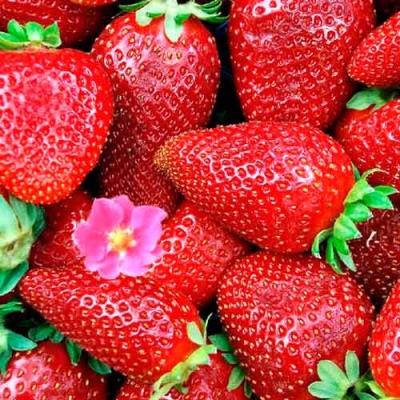
- Taste: dessert
- The size: large
- Size, cm: length - 3 - 4 cm
- Weight: 25-30 gr
- Yield rate: high
- Yield: up to 2 kg per bush
- Repairability: Yes
- Appointment: fresh consumption
- Description of the bush: compact
- Berry color: dark red, shiny
The tireless work of breeders gives all new varieties of strawberries to amateur gardeners. The remontant strawberry has gained great popularity, with proper care it can delight with the harvest all season. The Tristar variety, bred by foreign gardeners, has taken root well on Russian soil.
Description of the variety
The trademark of American strawberries is a high immunity to various diseases, inherent at the genetic level. The external attractiveness of the fruit and increased transportability are also a priority. Tristar strawberry fully corresponds to these parameters - a remontant large-fruited variety, bred by American specialists. It adapts well to the conditions of the middle zone and southern regions of Russia. Tristar is characterized by:
the average size of the bush is 20-25 cm;
a small amount of air layers - up to 10 pieces per bush;
high productivity;
the ability to grow and bear fruit in greenhouses;
resistance to diseases and pests of berry crops;
transportability of berries;
winter hardiness.
The plant forms a compact bush. The crop is formed both on the mother bush and on the mustache. The purpose of the fruit is universal. The variety is suitable for industrial cultivation and for amateur gardeners.
Ripening terms
The first fruiting of the variety occurs in June. Repeated fruiting begins at the end of July in favorable weather. In the case of a cool summer - in early August and before the onset of frost.
Yield
The variety is characterized by a high yield, up to 2 kg per plant per season.
Berries and their taste
Large berries of a conical shape, with a delicate, aromatic pulp, shiny, dark red color. Fruit weight can reach 30 g, size 3-4 cm.
The taste is dessert, it is characterized by a high sugar content. They consume fresh berries, prepare desserts from them, and store them frozen.
Growing features
The Tristar variety is grown in beds with bushes in one row. A distance of at least 15 cm between plants is observed, between rows - 25-30 cm. Regular watering is a condition for obtaining outstanding yields declared in the description of the variety. It is also important to feed with organic fertilizers once a week.




Site selection and soil preparation
When choosing a place for strawberries, it is important to remember that this is a sun-loving crop, which means that the site must be well lit, in extreme cases, you can plant the variety in partial shade. Moisture-loving strawberries do not tolerate stagnant water in the ground. The soil should be light, permeable, fertile enough.
Preparing the soil for planting consists in digging it with the removal of weeds and the introduction of organic fertilizers.

Pollination
The variety is self-pollinated, does not require special techniques for good fruit setting.

One of the important techniques in strawberry care is feeding. Regular fertilization guarantees a rich harvest. There are several different ways to feed strawberries, and each of them is designed for a specific period of plant development. During flowering, fruiting and after it, feeding should be different.

Diseases and pests
Due to the immunity to most diseases of the berry, the plants do not need constant treatments.

Strawberries are often subject to many dangerous diseases that can seriously undermine their condition. Among the most common are powdery mildew, gray mold, brown spot, anthracnose, and verticillosis. Before buying a variety, you need to inquire about its disease resistance.
Reproduction
The Tristar variety reproduces with a mustache, dividing a bush, and seeds. For propagation of the variety, a mustache is taken that appears during the second flowering, before the berries of the second harvest ripen. Peduncles are removed from rooted whiskers for reproduction. Distributed evenly on both sides of the beds with mother bushes, the rosettes form two rows by autumn. The next spring, the mother bushes are removed.
Sowing seeds for seedlings should be carried out in winter, from late January to March.
Important! Seeds are tight-like. Compliance with the sowing regime is a prerequisite for seed germination.
The composition of the soil mixture for seedlings:
sand - 3 parts;
crumbly humus - 5 parts.
In order to disinfect the soil, it is heated in the oven for 3 hours, maintaining a temperature of 90 ° C. Tristar seeds are scattered over the surface of slightly compacted, moist soil. A layer of snow 5 cm thick is poured, the seedling containers are covered with a film. Then the containers are taken out into the cold and kept at temperatures from 0 to + 5 ° C for 3-5 days.Seed germination occurs at a temperature of + 22 ° C.
Strawberry seedlings appear at different times, within 30-40 days (up to 60 days). It is recommended to dive seedlings into pots in the phase of 1-2 true leaves, after which the temperature drops to + 14.16 ° C. Seedlings are transplanted to a permanent place after the appearance of the 6th true leaf.



















































































